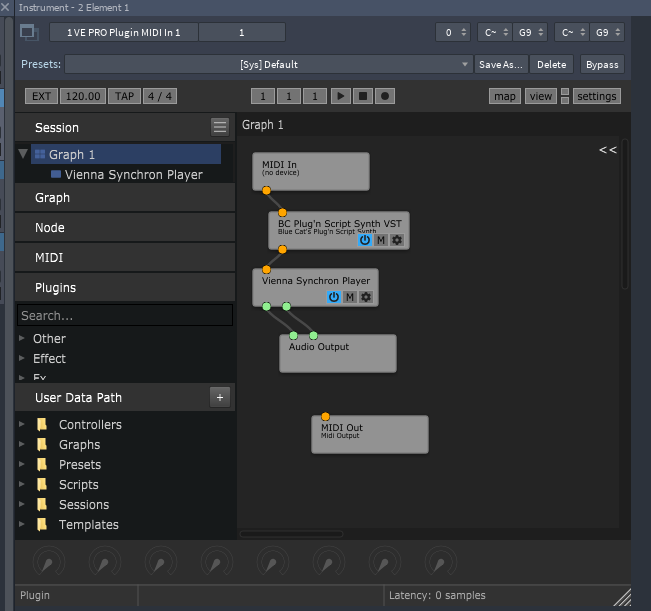-
Kontakt is fundamentally a different product because it is by design a platform for third party developers to develop content. Vsl has never pursued that kind of approach and likely never will. They develop their own content on their own sample players. Scripting in general would be cool though! I hear you about the single dimension, and no I never tried it. Hope you can find the solutions you are looking for.
-
This not working is a big frustration for me. I’ve tried, over and over, as new versions have been released, to use Blue Cat PatchWork and PlugNScript inside VE Pro without success. Crashes and restarts...
The integration with Studio One’s Sound Variations seems great, but I’m on Pro Tools, and I don’t want to juggle two DAWs just to be able to use articulation switches.
As mentioned before in this thread, a simple thing like being able to map a single Program Change message into multiple keyswitches would be so awesome!
-
The main problem is Patchworks. PlugNScript should work. I would recommend you get the cheap or free Kushview Element...which absolutely DOES work inside VePro..then you can host PNS inside that along with your instruments.
Kushview Element and Unify are the only two plugin sub-hosters I have been able to get to work reliably inside VePro. They are based on JUCE, for whatever the reason, that seems ok inside Vero.
All the other well known sub hosters like Patchworks, DDMF, PlogueBidule... have problems...don't know why.
-
-
I’m new to this concept, but I just installed Element and tried it inside VE Pro (Windows). It seems to work, but it hits the CPU harder than PatchWork and takes longer to open.
A bit overkill maybe (a full-fledged plugin host inside a plugin host) - I just want to be able to put a script before my VI.
Is there some way to tweak and reduce the size and complexity of an Element session to reduce the CPU hit?
My initial thought was to use a separate Element session per instrument, as in the attached pic, but maybe I could put multiple chains/instruments inside a single Element session?
-
I do not think Element is particularly hard on the CPU. I have never compared it to Patchworks, but it would be interesting to see the actual results in comparison.
Did you buy Element or build it yourself? If you built it yourself, are you sure you aren't using the debug version?
I can't think of anything about your configuration that would potentially use less CPU, but if you're getting some unusual CPU activity it might be worth posting a ticket on Kushview's GitHub tracker to see what would come out of that.
-
[quote=Håkan Glänte;307198]
My initial thought was to use a separate Element session per instrument, as in the attached pic, but maybe I could put multiple chains/instruments inside a single Element session?
[/quote]
yes you could potentially put multiple instruments inside one Element session, though I don't think that is particularly a good idea, because then you wouldn't be mixing the instruments in VePro's excellent mixer. That certainly would not work for me since I use MirPro.
-
I do not think Element is particularly hard on the CPU. I have never compared it to Patchworks, but it would be interesting to see the actual results in comparison.
Did you buy Element or build it yourself? If you built it yourself, are you sure you aren't using the debug version?
According to the CPU meter it taxes the CPU more. Haven’t tried a real-world scenario with full blown arrangement.
I bought it, don’t know how to build it myself. But maybe that could be a way to create a lighter version?
-
yes you could potentially put multiple instruments inside one Element session, though I don't think that is particularly a good idea, because then you wouldn't be mixing the instruments in VePro's excellent mixer. That certainly would not work for me since I use MirPro.
I tested multiple instruments inside one Element session using buses to route the separate outputs back to the VE Pro mixer, so it’s doable and let’s you use the mixer/MIR Pro. I don’t know if it saves some processing power, though.
-
Yea that is true you could do that but really element should be taking very little cpu. If you can identify for sure that it is taking a hit on the cpu and you can for sure blame it on element then definitely post a comment on the kushview GitHub issue tracker. It should not be. I don’t think building it yourself will make it any faster.
Forum Statistics
202,893 users have contributed to 43,311 threads and 259,534 posts.
In the past 24 hours, we have 1 new thread(s), 10 new post(s) and 77 new user(s).
